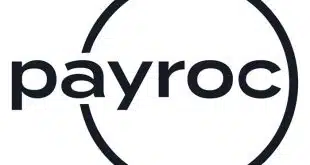By Kevin Woodward
@DTPaymentNews
Vantiv Inc.’s $425 million acquisition of the U.S. unit of Moneris Solutions Corp. is poised to boost the processor’s larger strategy of growing its integrated-payments volume, according to comments by Vantiv’s top brass during an earnings call Wednesday.
“Building on our success, our rationale for the acquisition was simple,” Charles Drucker, Vantiv president and chief executive, said during the call to discuss fourth-quarter results, according to a transcript from SeekingAlpha.com. “It expands our presence in high-growth channels and it enables us to consolidate their processing on to our platform. About 60% of Moneris’ net revenue comes from integrated payments and merchant bank channel.” The other 40% is from traditional merchant-processing services.
Vantiv set out to make integrated payments—those made at merchants using point-of-sale business-management software—a larger part of its business with the 2014 purchase of Mercury Payment Systems LLC for $1.65 billion.
Moneris, for example, has a “stronghold” among health-care service providers, Drucker said, in particular a “very large” one. Vantiv’s plan is to use this expertise and not make its integrated-payments efforts too broad. “That really helps us accelerate and start to do the things that we’ve done in retail and restaurant,” he said. “We have others that we are developing, but our strategy is not to get distracted by chasing six or seven [merchant] verticals. It’s to continue to execute.”
Moneris, like Mercury before it, has the relationships with the providers, but not the products or scale that Vantiv has that can attract more merchants, Drucker said.
Symmes Township, Ohio-based Vantiv’s integrated-payments business is posting “high-teens, low-double-digit types of growth rates,” said Stephanie Ferris, chief financial officer. “We don’t see that slowing down.”
Vantiv also intends to grow its e-commerce transaction volume, which has a “mid-teens” growth rate, Ferris said. To do so, Vantiv is targeting international e-commerce, which could entail enabling payments in more countries, Drucker said, that would help U.S. merchants offers international payment acceptance with fewer obstacles.
Vantiv also provided an update on EMV for both its merchant services and financial institutions businesses. Vantiv provides card processing to issuers, debit card issuing and processing, and other services.
Most of the financial institutions working with Vantiv have completed their EMV debit card issuance. “We’re through the lion’s share of it,” Ferris said.
Merchants upgrading to EMV acceptance also were pitched about data-encryption and tokenization services, but the central focus has been on EMV upgrades. Drucker said most of Vantiv’s larger merchants have adopted EMV, as have smaller merchants, because POS terminals now almost universally have EMV acceptance built in.
The challenging segment has been mid-size merchants, those more apt to use specialized software on a computer to manage their businesses and accept payments. Drucker said because the risk of fraud loss is not as great in this segment as it can be for other merchants, many of them postponed their EMV updating until this year or next. “In the middle part of the base, which is a lot of clients and great opportunity, I think we have a good runway there,” Drucker said.
Vantiv reported net income of $63 million for the fourth quarter, down 11% from $70.4 million a year earlier, on revenues of $955.1 million, up from last year’s $852.3 million.




